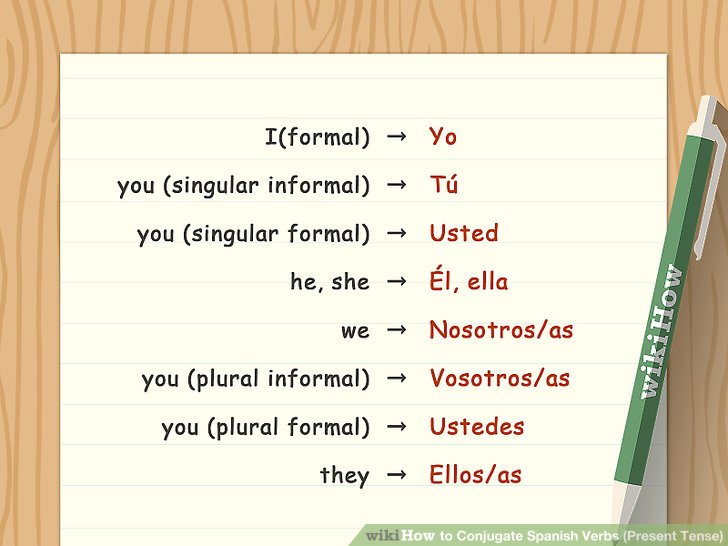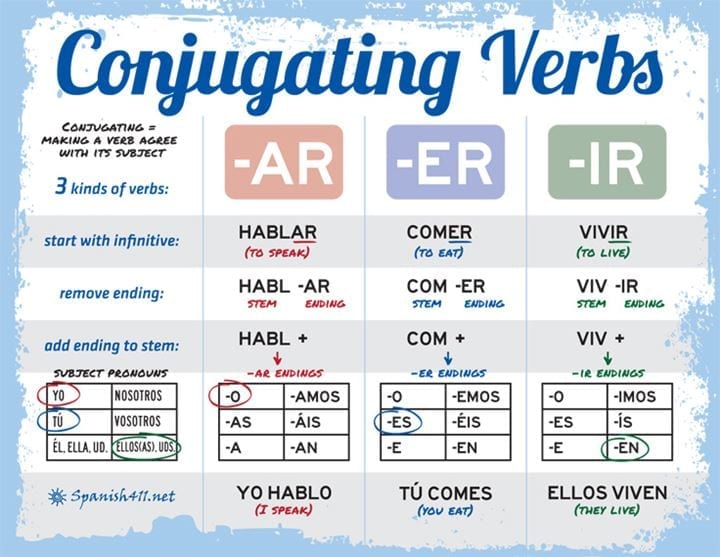Click to see all conjugation charts of complacer in every tense
In this conjugation lesson we will learn how to conjugate the verb complacer in the Presente tense of the Indicativo mood. It means we will see step by step how to create and translate forms of each grammatical person.
This lesson is specifically about the complacer verb conjugation. For an overview of Simple Tenses conjugation see our Simple Tenses Conjugation Chart.
You may also see this Video Presentation on how to conjugate verbs in Presente. It’s embedded below, but using the above link you will get more detailed information on conjugation in this tense as well as explanation of special cases and exceptions.
How to translate Presente to English
Note that the English phrases provided below next to each conjugation are not direct translations from Spanish to English. They are usually the closest general equivalents. The example differences are:- In Spanish conjugation, there is the form usted in the third person singular. But this person does not translate to the English third person singular. It translates to the so called formal you and uses the inflected form which is most often represented as he/she/it in English conjugation charts.
- Similar situation happens in the third person plural, where ustedes translates to the English plural formal you but uses the form which corresponds to the they form in English.
- Tenses are used differently in Spanish and English, so the actual translation should always take into account the context and focus on translating the meaning, not just words.
- In both languages each verb may have multiple meanings and not every meaning translates directly to the other language. Here also, the context and focusing on the particular meaning helps to create the most accurate translation.
The Spanish Presente de Indicativo tense translates to one of the following:
- The English Present tense, for example: tú complacesyou please
- The English Present Progressive (or Present Continuous) tense, for example:hoy usted complace(formal) you are pleasing today
Note that the Spanish equivalent of the Present Progressive also exists and is in common use – that’s Presente Progresivo (a.k.a. Presente Continuo).
Note the timeline
The ability to correctly locate the intended position on the timeline is a crucial skill for the right use of tenses. So note the timeline in our lessons and visualize it while listening, speaking, writing and reading. After some practice you will be able to select the right tense to use much easier.
Step by step instructions
Presente belongs to the simple tenses group, which means that all of the conjugated forms are one word long. There are also compound (compuesto) tenses in the Spanish language, where each inflected form consists of two words.The verb complacer has an almost entirely regular conjugation in the Presente tense of the Indicativo mood. An exception is the first person singular, which has an irregular form. It means the other persons follow the basic rules for this group (-er) without further exceptions or spelling corrections. The basis for this conjugation is the stem of the verb, so we need to start by splitting the infinitive into a stem and an ending. It’s easy to do. Simply remove two letters from the end of the infinitive form to get the ending — one of -ar, -er or -ir. What’s left is the stem. So for complacer:- the stem is: complac-
- and the ending is: -er
- yo complazco – I please
The first person singular (yo) uses the -zco ending. It influences other tenses as well. Imperativo Afirmativo & Negativo and Presente Subjuntivo are created based on this person, except for:
- Imperativo Afirmativo tú form, which is regular
- vosotros/vosotras which is always regular in that tense
- yo complazco – I please
- tú complaces – you please
- él complace – he pleases
- ella complace – she pleases
- usted complace – (formal) you please
- nosotros complacemos – we please
- nosotras complacemos – (feminine) we please
- vosotros complacéis – (plural) you please
- vosotras complacéis – (feminine, plural) you please
- ellos complacen – they please
- ellas complacen – (feminine) they please
- ustedes complacen – (formal, plural) you please
¡Ya está! The conjugation is now finished. Put together, the conjugation chart looks like this:
| yo | complazco | I please |
| tú | complaces | you please |
| él/ella/usted | complace | he/she/it pleases |
| nosotros/nosotras | complacemos | we please |
| vosotros/vosotras | complacéis | you please |
| ellos/ellas/ustedes | complacen | they please |
But do not end your session yet – it is very important to repeat and practice the material in order to remember it. Check below for example phrases and suggestions.
Example sentences
El instituto de cultura se complace en invitar a todos los estudiantes a sus exposiciones de arte.
The institute of culture is pleased to invite all the students to its art expositions.
Next Steps to Perfection
|
Report a mistake | Give feedback
Thank you very much for making the effort to contact us!
We strive to provide the highest quality content and we greatly appreciate even the smallest suggestions:
We strive to provide the highest quality content and we greatly appreciate even the smallest suggestions:



